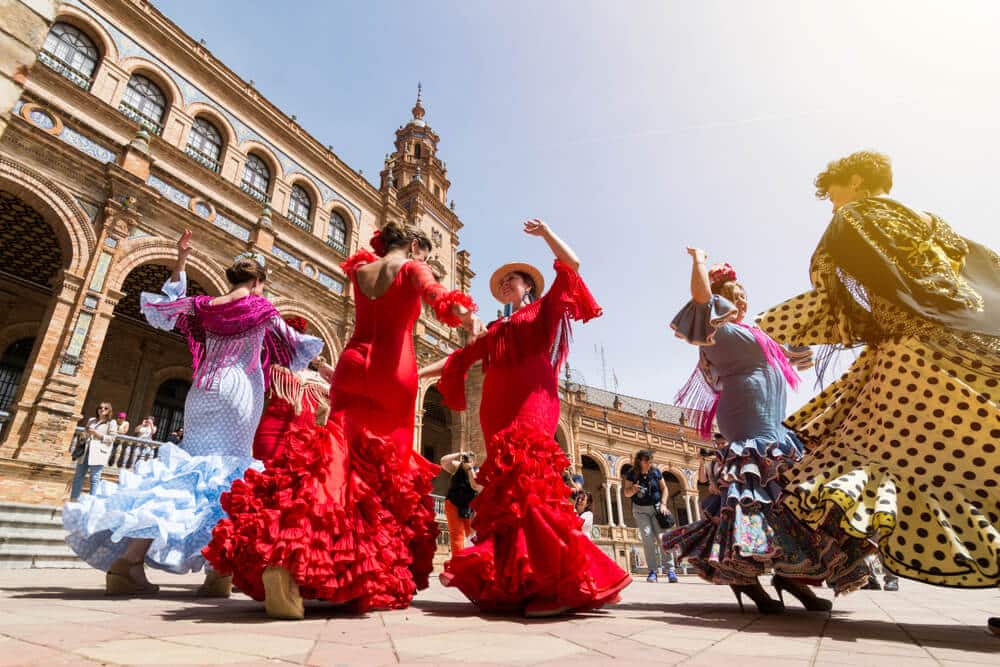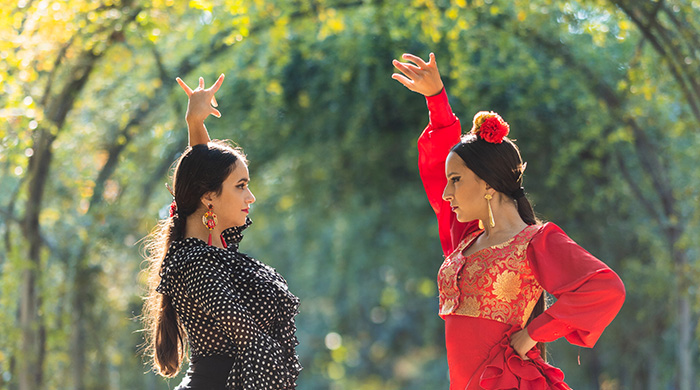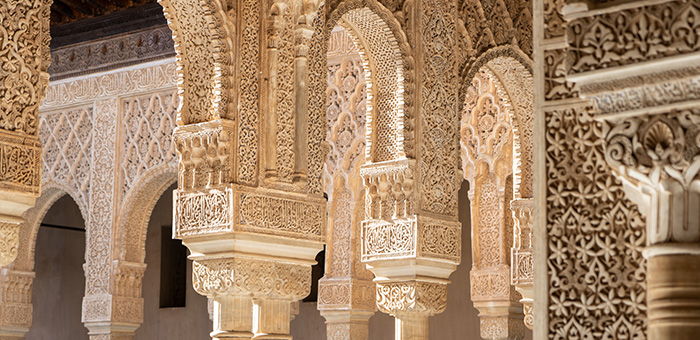
Flamenco costume: history and origins
Few regional costumes are as easy to recognize as the gypsy dress or flamenco dress. flamenco dress. A style of clothing that has become one of the true hallmarks of Andalusian culture and that is never missing in the traditional pilgrimages and festivals of the region. A garment that is also essential in flamenco performances, being one of the most striking and identifying elements of this art that has crossed borders. But do you know the origin of the flamenco dress and its history?
The history of the flamenco dress It is quite curious, since it is a garment that has evolved over time, adapting to fashions but without ceasing to be the hallmark of Spanish culture, reinventing itself with new accessories, materials and prints. Here we explain where the flamenco dress comes from and how it has changed over time.
What is the origin of the flamenco dress?
The origin of the flamenco dress is humble. This is the clothing worn by peasant women in Andalusia, who used to attend the old cattle fairs between the end of the 19th century and the beginning of the 20th century. The ruffled gown was very comfortable and light, which made it ideal for this type of work.
Generally, peasant women added embroidery and bright colors to their gowns, attracting the attention of bourgeois women. bourgeois women of the time. This meant that many began to order costumes in this style, so that the costume worn to attend the fair ended up becoming the “official attire”. Especially from 1929 onwards, during the celebration of the Ibero-American Exposition, when its use became “official”, largely thanks to the professionalization of flamenco, which took it as its own clothing.
Over time, the flamenco dress crossed borders and began to be part of fashion, changing and adapting to the fashions of the moment, but always maintaining some fixed characteristics. In fact, it is the only regional costume in Spain that is renewed according to fashion. A good example of them is the SIMOF catwalk, the International Flamenco Fashion Show, where we can enjoy an appetizer of the trends of each year.
When were polka dots included in the flamenco dress?
Nowadays, the dress is almost always long and usually has a neckline, either round, v-neck or square, adjusting at the waist to open at the hip. It is usually adorned with ruffles on the sleeves and skirt and is usually in bright colors. We can find them with plain designs, but usually they are printed, being the most typical the one of moles.
But, do you knowdo you know the origin of the polka dots on the flamenco dress and its history?? The truth is that this print did not have a direct relationship with this dress since its inception. The first moles appeared in the 18th century by chance, as it was a matter of a stamping error. The effect was not very pleasing to the couturiers of the time, so the fabrics were sold very cheaply, which would cause them to be purchased mainly by the poorest people, who would make dresses to wear to cattle fairs. So a print that started out as a throwaway has ended up becoming one of the main hallmarks of a suit that is known around the world.
Currently, there is a powerful industry around the flamenco dress and it is quite ironic that, being in its origins a humble costume, today it is a whim that can be worth several thousand euros. a whim that can even be worth several thousand euros. Not to mention the accessories and accessories that accompany the look. A dress that has become a real piece of adoration.
Related post

The 7 most famous Flamenco songs in history

7 Monuments in Granada that will steal your heart

What is flamenco dance?
FLAMENCO
SHOW
Daily live flamenco shows. Accompany your experience with a gastronomic experience in a beautiful outdoor garden with capacity for 150 people.

